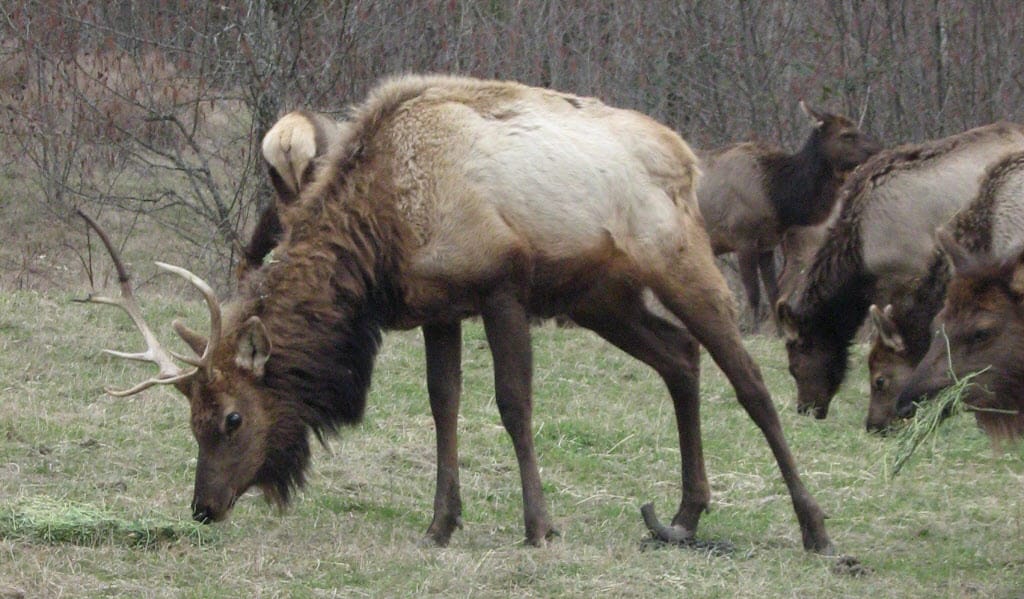Elk in Southwest Washington showing severe symptoms of crippling hoof disease likely will be euthanized, the state Department of Fish and Wildlife says.
“At this point, we don’t know whether we can contain this disease,” said Nate Pamplin, wildlife program director for the agency in Olympia. “But we do know that assessing its impacts and putting severely crippled animals out of their misery is the right thing to do.”
Jerry Nelson, deer and elk section manager for the department, said the timing of when animals might be euthanized “has not been finalized.”
Dave Ware, game division manager, said in Vancouver on Tuesday night the euthanization program will start slowly.
“It will only be a few animals initially,” Ware said.
Department-qualified employees such as biologists and wildlife enforcement officers will do the shooting and the carcasses will be given to food banks, he added.
Since 2008, the department has received increasing reports of elk with misshapen hooves in Clark, Cowlitz, Lewis, Pacific, Wahkiakum and Grays Harbor counties. Scientists believe the animals pick up and transmit the disease through wet soil, characteristic of the lowlands of Southwest Washington.
State wildlife managers plan to enlist dozens of volunteers this summer to assist them in assessing the prevalence and geographic distribution of the disease in the Mount St. Helens and Willapa Hills herds.
A 16-member scientific panel met early this month and agreed the disease most likely involves a type of bacterial infection that leaves elk with missing or misshapen hooves. The panel of veterinarians and researchers agreed the disease closely ensembles contagious ovine digital dermatitis in sheep.
Kristin Mansfield, department epidemiologist, said treponeme bacteria have been linked to an increase of hoof disease in cattle and sheep in many parts of the world, but has never before been documented in elk or other wildlife.
The diagnosis limits management options, Pamplin said. There is no vaccine for the disease and no proven options for treating it in the field.
“There is no evidence that the bacteria are harmful to humans,” Mansfield said. “Tests have shown that the disease does not affect the animals’ meat or organs.”
Some livestock producers bathe the hooves of infected sheep or cattle in an antibiotic solution, but many become re-infected and are sent to market, she said.
“Daily foot baths are not a realistic solution when you’re dealing with thousands of free-roaming elk,” Mansfield said.
The primary scope of work this summer will be assessing the geographic spread of the disease and the proportion of the herd that is infected, Pamplin said.
In the winter, the state will fit elk with radio collars to determine how the disease affects survival rates and calving. Wildlife managers likely will euthanize elk showing severe symptoms, he added.
Bruce Barnes, founder of Mount St. Helens Rescue and a longtime activist in the elk hoof disease issue, said the Department of Fish and Wildlife should wait until winter before euthanizing crippled animals.
“It’s a bad action at this point,” said Barnes, of Vancouver. “Hunters who have drawn a Margaret or Winston or Toutle (game unit) tag, then spent $150 extra to get an access permit from Weyerhaeuser, and now they learn this. It’s not right.”
Barnes said it was disingenuous for the department to wait until the special hunt permit process was over and fees were collected to make the announcement.
“It feels like a rip-off to kill all these elk before anyone else gets in the woods,” he said. “We’ve been told since 2008 these animals are OK to eat.”
Barnes said he spotted elk this weekend north of Carson National Fish Hatchery in Skamania County with hoof rot.




